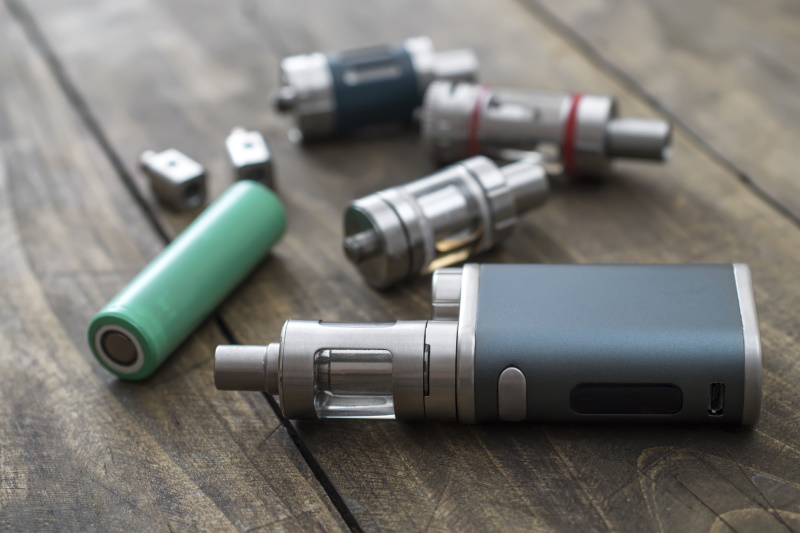Science
Otago Research Reveals Vaping Device Design Fuels Youth Usage

Research from the University of Otago has unveiled significant insights into how the design of vaping devices contributes to their widespread acceptance among youth, particularly within Māori communities. Dr. Robin Quigg conducted a study that explored vaping habits among young Māori individuals, highlighting a concerning trend of normalisation in various settings.
Dr. Quigg’s research included seven collective groups, or whakarōpū, within a kaupapa Māori framework. The findings revealed that vaping has become so commonplace that participants reported using devices in places traditionally reserved for cultural practices, such as libraries, club rooms, and lecture theatres. “It was normalised to vape anywhere,” Dr. Quigg noted, emphasizing the extent of the issue.
Among the participants aged between 18 and 26, over half had never smoked cigarettes but were actively using or had used vaping devices. This trend raises concerns about the potential for nicotine addiction, as many reported the concealability of these devices encourages ongoing use. Dr. Quigg stated, “Our findings suggest the design of vaping devices, particularly their discreteness, has fostered vaping’s normalisation and continuing uptake by young people.”
These findings point to a troubling reality: some individuals have even observed vaping occurring in sacred spaces, such as urupā (cemeteries) and marae (communal meeting grounds). One participant shared, “I see people walking around the whole marae complex and vape, even on the ātea.” Others expressed concern, stating that such actions contradict tikanga, the traditional Māori customs and practices. While many marae have designated vaping areas, some enforce strict smokefree policies, yet compliance is inconsistent.
Dr. Quigg highlighted that even in general public areas, designated smoking zones are often ignored by vapers. “You would see a lot of people who are smoking cigarettes move out to the [smoking] zone, but a lot of people who are vaping won’t,” she explained.
In response to her findings, Dr. Quigg is advocating for urgent regulatory reforms regarding vaping devices. She pointed out that current policies struggle to keep pace with the evolving landscape of nicotine products in Aotearoa, New Zealand. “There is a need for urgent and targeted regulatory action regarding vaping devices,” she stated.
Dr. Quigg is proposing stricter regulations on the design of vape devices, which could include larger sizes, therapeutic rather than lifestyle designs, and flavours that produce less appealing odours. These changes, she argues, would reduce the concealability of vaping devices and help maintain the integrity of indoor environments, such as libraries, lecture theatres, and bars, as well as outdoor spaces designated as smokefree, including urupā, marae grounds, and playgrounds.
While stricter regulations on vaping devices are essential, Dr. Quigg cautions that they alone will not sufficiently protect young people from the harms of vaping. “Instead, stronger measures must be implemented to reduce the appeal of vaping,” she concluded.
As vaping continues to gain traction among youth, it is clear that addressing the design and regulation of these devices is crucial to safeguarding public health, particularly within vulnerable communities.
-

 Sports1 month ago
Sports1 month agoNetball New Zealand Stands Down Dame Noeline Taurua for Series
-

 Entertainment1 month ago
Entertainment1 month agoTributes Pour In for Lachlan Rofe, Reality Star, Dead at 47
-

 Sports1 month ago
Sports1 month agoSilver Ferns Legend Laura Langman Criticizes Team’s Attitude
-

 Entertainment2 months ago
Entertainment2 months agoKhloe Kardashian Embraces Innovative Stem Cell Therapy in Mexico
-

 Entertainment1 week ago
Entertainment1 week agoNew ‘Maverick’ Chaser Joins Beat the Chasers Season Finale
-

 Sports2 months ago
Sports2 months agoGaël Monfils Set to Defend ASB Classic Title in January 2026
-

 World3 months ago
World3 months agoPolice Arrest Multiple Individuals During Funeral for Zain Taikato-Fox
-

 Politics2 weeks ago
Politics2 weeks agoNetball NZ Calls for Respect Amid Dame Taurua’s Standoff
-

 Entertainment3 weeks ago
Entertainment3 weeks agoTyson Fury’s Daughter Venezuela Gets Engaged at Birthday Bash
-

 Sports3 weeks ago
Sports3 weeks agoHeather McMahan Steps Down as Ryder Cup Host After Controversy
-

 Entertainment3 weeks ago
Entertainment3 weeks agoTyson Fury’s Daughter Venezuela Gets Engaged at Birthday Bash
-

 World2 weeks ago
World2 weeks agoNew Zealand Firefighters Plan Strike on October 17 Over Pay Disputes





















